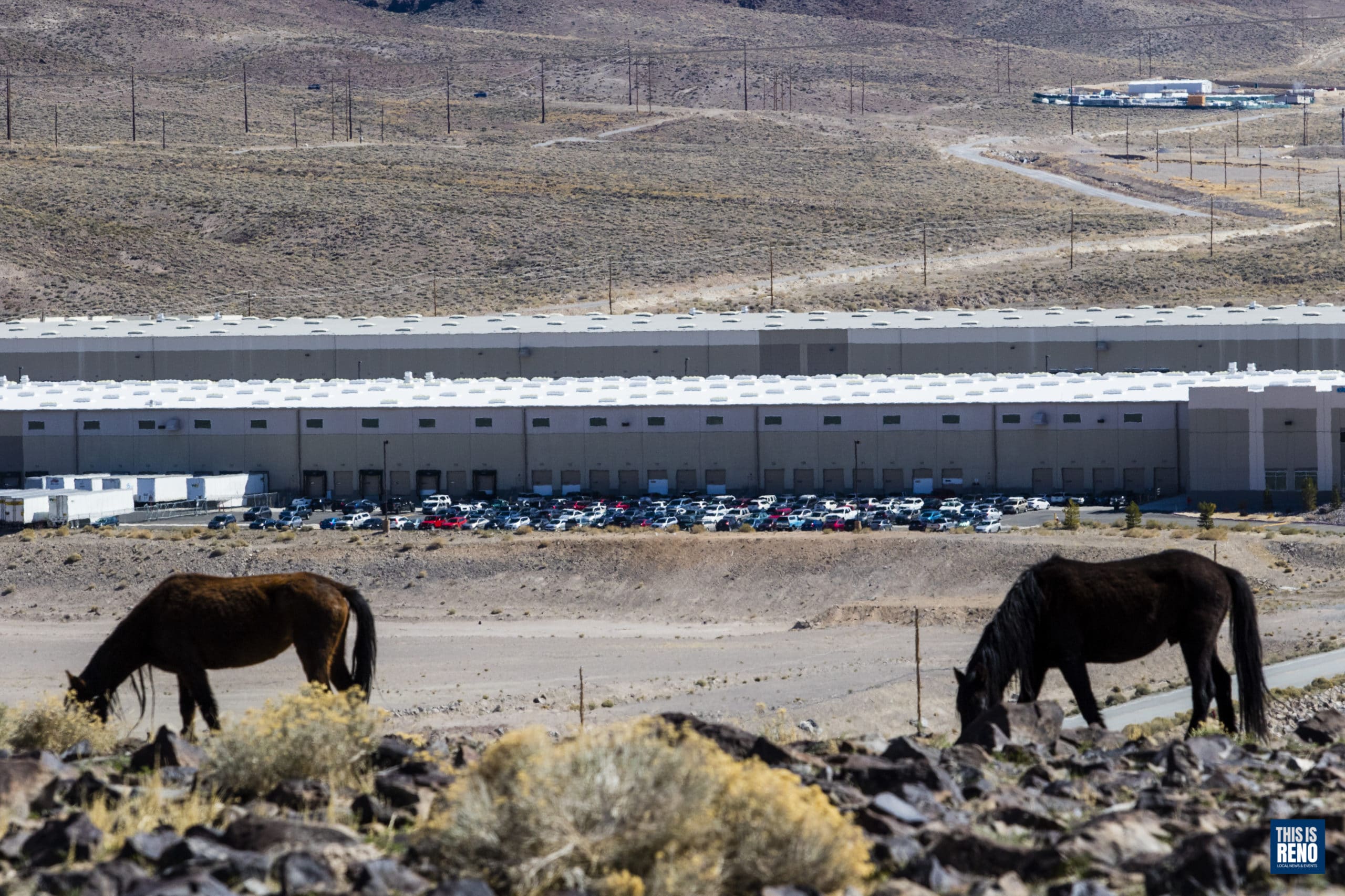“Horses, wild or domestic, tend to get themselves into trouble if given the opportunity,” said Tracy Wilson.
Some of that trouble can include getting into roadways, a fairly common problem for both them and drivers in the areas surrounding the Virginia Range—which is home to an estimated 3,000 wild horses.
Wilson is a volunteer with three local wild horse management and advocacy groups that look after the locally beloved wild horses of the Virginia Range. She’s a member of a large animal emergency rescue organization and does documentation work for the American Wild Horse Campaign (AWHC)—the group that runs a fertility control program to keep the horse population under control. And she’s a member of Wild Horse Connection (WHC), the group that has an agreement with the Nevada Department of Agriculture to manage the Virginia Range horses.

The horses fall under the jurisdiction of the NDA rather than the Nevada Bureau of Land Management—like most other wild horses in the state—because the BLM declared the Virginia Range a “wild horse free area” through a land planning process in 1986.
According to the NDA, “As a result of this declaration, the Virginia Range horses have been designated as estray/feral livestock because they are not within a BLM herd management area. Horses that have migrated over time or have been ‘turned out’ onto the Virginia Range fall under Nevada Revised Statute (NRS) Chapter 569 pertaining to estray/feral livestock.”
Normally, it would be illegal for anyone to feed the horses, as that’s a part of NRS 569. However, Wild Horse Connection—the group running the diversionary feed program—has established a process with the NDA to get approval for its diversionary feed sites. It includes getting permission from landowners and submitting maps and parcel numbers. As with the fertility control program, through which volunteers of AWHC use dart guns to inject mares on the range with birth control, getting approval for feed sites can be a bit of lengthy process—but WHC has had to expand the number of them to more than half a dozen.
“We’ve expanded a bit, just in problem areas,” Wilson said.
Those problem areas include USA Parkway east of Reno, Dayton, Pleasant Valley, Geiger Grade and a few others.
“The Highway 50 from Dayton to Silver Springs, before the fencing starts, has been problematic for years,” Wilson said. “So, they started a diversionary feed site in Dayton. And then they just moved that site a little ways to the east.”
She said the feeding sites must be moved from time to time because the horses are also foraging on plants and naturally move themselves along from area to area in search of them.
“As they just naturally tend to look to different areas, we’re trying to keep them up those hills instead of down on Highway 50,” Wilson said.
She said USA Parkway is an area where the group only recently got approval for diversionary feeding but that horses on the roadway have long been a problem there.
“The industrial expands, and you see things like landscaping and water features—and this new Lakefront Business Park where the main pond was,” Wilson said. “That pond has always been an attraction to the horses, and they cross the roads to get there.”

The group is attempting to divert the horses toward water sources that are not within the industrial park. There are two diversionary feed sites in this area. It’s also looking to get approval for a site near Silver Springs where a missing cattleguard is leading to horses wandering onto the highway, Wilson said.
“That will be short-term, only until they get that cattleguard fixed—but, of course, everything takes time on the state level.”
There are more than half a dozen diversionary feeding sites that need to be attended to seven days a week. This is expected to be the case for the next few months, Wilson said.
“Horses…establish patterns, and then they tend to stick to them,” she said. “And then certain times of year, those patterns change a little bit. So we’re getting them through the tough times by trying to establish some new patterns. At the end of the season, forage goes down—so their patterns change looking for forage. We’re just trying to redirect that.”
Wilson said a team of two can handle an area with one person driving and the other person throwing hay—and most of the areas are fairly accessible in a truck, with little or no four-wheel drive required.
“Teams of two, and we know everybody has a life—so we don’t expect teams of two to fill seven days a week,” she said.
This means the group will need enough teams of volunteers to allow for a schedule of rotating days for the responsibility.
WHC will also be starting a fundraising campaign soon to help pay for the hay being fed to the Virginia Range horses. While the group is only feeding some of the Virginia Range’s estimated 3,000 horses, it gets expensive to buy certified weed-free hay—a requirement of the agreement established with the NDA.
There are also other volunteer opportunities for people who are interested in helping the group but not in distributing hay. Those who are interested in learning more should email WHC at [email protected]. Also, be aware that it may take a few days to hear back.
“We have calls on the range every single day,” Wilson said. “Sometimes the day gets away, and we don’t get back to people immediately. If they give it a couple of days, they’ll get a letter back outlining the different opportunities to help and the volunteer waiver paperwork to sign.”
Correction: The correct email for WHC is [email protected].

